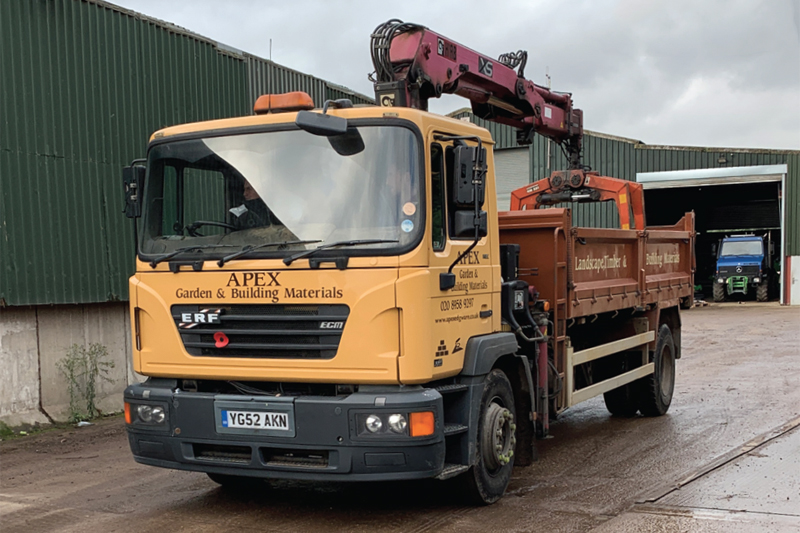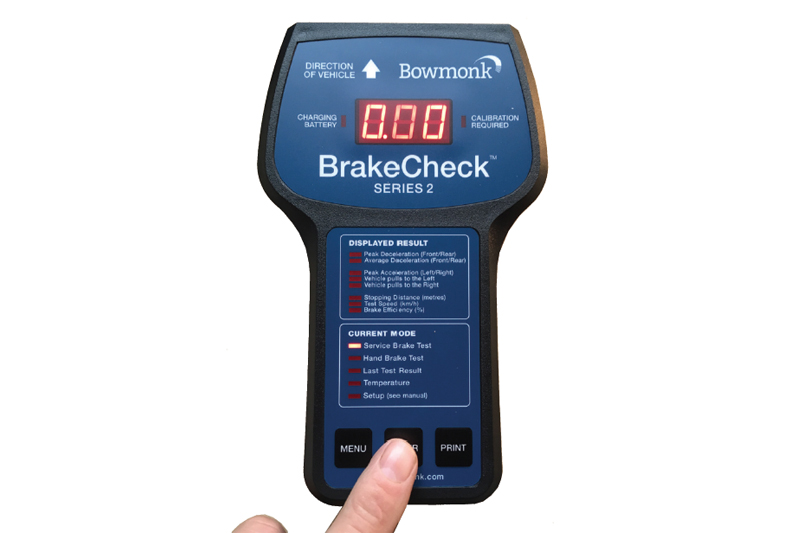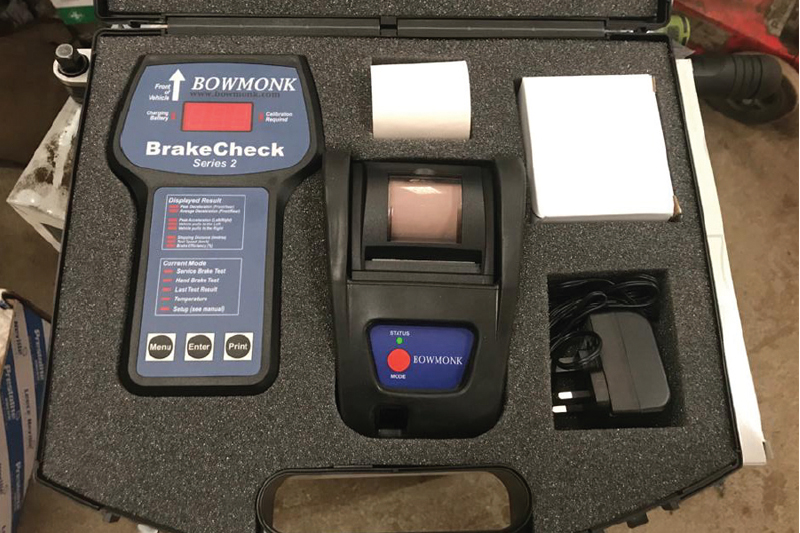
Bowmonk talks through the past and present of brake testing and how its storied history enables it to assist the customers of today.
The concept of brake testing using a portable decelerometer has been in existence since the 1920s. Specifically, in 1928, what we now recognise as the iconic ‘Tapley meter’ was used by the Detroit Police Department to determine the number of feet required to stop a moving vehicle. If the braking distance was within the required limit, the Police Officer issued the driver with a pass certificate, which would be dated and displayed in the vehicle’s windscreen, much like the old car tax disc.
Until the introduction of the Roller Brake Tester, the Tapley meter was the only means of testing a vehicle’s brakes. Indeed, the mechanical Tapley meter is still widely used today for this method of testing, whereupon the test result would be handwritten and presented to the customer, with a copy for the test station.
However, in today’s world, more information is required in addition to stopping distance, so Bowmonk is now able to determine test speed, braking efficiency, and braking imbalance. Duty of care means accountability now plays a large part; proving a meaningful test has been performed. To confirm this, a comprehensive date and time-stamped brake test report can be generated using the infra-red printer.
More recently, Bowmonk has been working very closely with the DVSA, to produce a ‘connected’ brake tester, meaning the BrakeCheck unit can be remotely connected, affording wireless communication with the test station’s MOT computer, removing the potential element of human error when transferring test data.

Bowmonk’s BrakeCheck is now used in over 20,000 MOT test stations nationwide as a means of testing those vehicles where a roller brake tester is not appropriate. Outside of these vehicle types, BrakeCheck is also used by countless commercial vehicle workshops across the UK and Ireland for testing the brakes on HGVs, coaches, and buses.
National Express is one company that has benefitted from Bowmonk’s BrakeCheck. Nick Sorrill, Head of Quality Assurance, purchased several BrakeCheck kits to help the company ensure its “high safety standards and duty of care policy were adhered to”. He continues: “There is no exception or compromise where our bus and coach brake testing programme is concerned.”
The same requirement was requested by van hire company Enterprise Flex-E Rent, where it would perform brake tests as part of its pre-hire safety inspections. In 2014, the Traffic Commission introduced a voluntary brake test into existing scheduled safety inspections – a brake test that was required every three months.

Initially, this was met with some concern, as it was first thought that another three visits to an ATF (Authorised Test Facility) was necessary, at a potential cost of £15 per axle. However, the DVSA decided to allow ‘in-house’ brake tests to be carried out during a scheduled safety inspection.
Bowmonk now offers a comprehensive training session for the BrakeCheck kit, demonstrating the correct use of the kit, ensuring all attendees are competent. Ultimately, all attendees are awarded a ‘Certificate of Competence’ on completion of the session. This is accepted and recommended by the DVSA.
Coach operator Go Ahead, Enterprise Flex-E-Rent, and construction companies Aggregate Industries and East Anglian Water, were a few of the many of whom subscribed to this facility. To complement the functionality of the BrakeCheck kit, there is also an option available to download the results to a PC. This is ideal if the data has to be internally transported.








